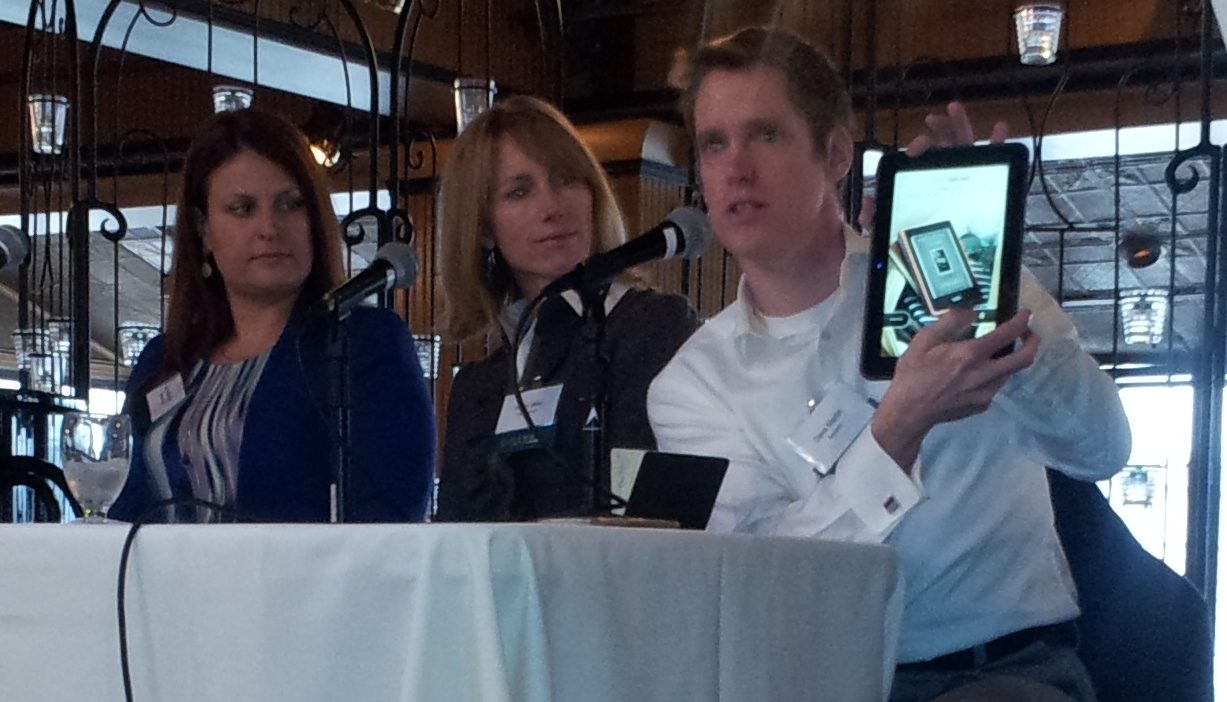
At a recent Puget Sound Research Forum event, attendees were expecting to learn about the future of advertising research. However, they were also inspired to improve their own professional futures. On January 17th, Judy Mahtaban of Millward Brown, David Martin of Amazon, and Hillary Miller of Wunderman shared their unique views on the increasingly fragmented world of advertising and how to best influence and measure it. They also provided compelling personal advice on how researchers can be more effective.
David Martin oversees audience and advertising research for Amazon’s own advertising business. Martin and his team focus on “scale, personalization, and innovation.” To illustrate scale, Martin shared that Amazon and its sister sites were recently ranked the 6th most visited of all U.S. web properties. (September 2012 results reported by comScore.) This makes Amazon a coveted medium for advertisers to place their message in front of viewers. Just as shoppers on Amazon receive product recommendations based on their browsing and purchasing habits, they are also shown equally personalized ads. Amazon then measures both short and long-term purchases that may have been influenced by those ads. Through innovation, Martin and his team are able to display and track the performance of ads on any devices in the Amazon Kindle ecosystem. They are also prepared to do so for any new devices that Amazon may dream up in the coming years.
Hillary Miller, Vice President and Global Strategic Services Director at Wunderman, believes that behavioral and social data can contribute to consumer insights but are not replacements for deeper primary research. As her company develops marketing campaigns, they first establish a strategy based on a clear measurable action that they want consumers to take. This approach is so central to Wunderman that they use it as a rallying cry for the agency: “We Create Action.”
Judy Mahtaban, Vice President of Client Development at Millward Brown, believes we are in a new era of fragmented eyeballs and distracted consumers and this makes research collection increasingly difficult. Her team integrates large sets of aggregated behavioral data with primary research to best understand the success of their clients’ advertising efforts. Partly due to distracted consumers, especially those on mobile devices, Millward Brown’s brand equity surveys that used to take 20 minutes are now being done in 5. Mahtaban clarified that it is critical for researchers to share insights early in the advertising creation process and not just be called in to measure advertising results after the fact.
While the audience was receptive to these ideas, they were more energized by the panelists’ recommendations on how to be better researchers, marketers, and presenters. Miller feels that her team at Wunderman has to have top-notch storytelling skills in order to crystallize large amounts of data for their clients. She creates suspense at the start of her presentations and then builds to one main point. Wunderman calls this “the one simple statement.” Mahtaban works to ensure she understands the client’s central business question and uses her slide titles to tell the main story of her presentation in a compelling way. The moderator of the panel, Laurie Gelb, recommended building at least some element of drama, mystery, or comedy into every presentation.
When hiring, Miller looks for people who are curious, can distill research into succinct ideas, and can persuade through writing, speaking, and presentation decks. At Amazon, Martin hires researchers with excellent project management skills, strong quant skills, storytelling drive, and the organizational skills to “tee up the research on a silver platter or silver spreadsheet.”
The most important insights I took away from this presentation:
- Start with a strong headline and create suspense.
- Distill and integrate facts and perspectives from multiple sources.
- Crystallize the findings into one simple statement: be curious, organized, and engaging.

